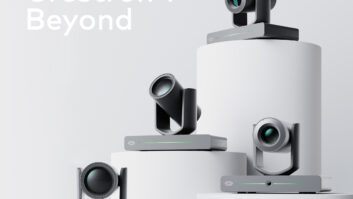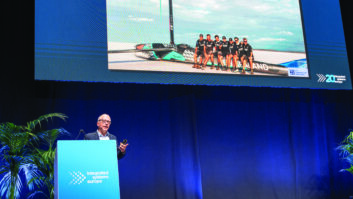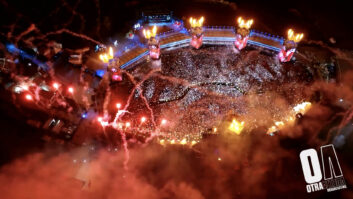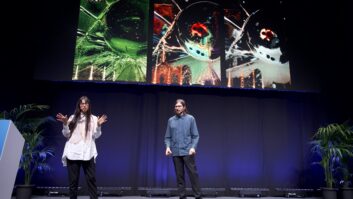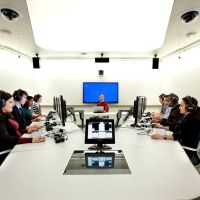
Use of Vaddio cameras at Time Warner’s Medialab helps to take audience research to a whole new level. Audience research is all about observation and recording. You want to capture not only what test subjects say about the movie, video, game or TV commercial you’re testing, but also what their faces reveal. At least that’s the case at Time Warner’s new Medialab in Manhattan, where CompView Audio Visual designed a video capture system that helps measure what test subjects feel along with what they say and do. According to Tom Yerkes, who was in charge of the project for the Oregon-based integrator, the quality of the robotic cameras in a system like this is crucial. “We needed a camera that would provide crisp, high-definition digital images over the various distances involved, in areas with very different lighting and completely different colour temperatures,” Yerkes explains. The new facility is designed to help producers from Time Warner’s nearly 100 subsidiaries create more compelling content, whether that’s for Warner Bros movies, HBO television, CNN news broadcasts, Time Warner magazines, video games from the company’s Interactive Entertainment division, or trailers, television advertising and websites created to promote these products. In addition, Medialab can test how consumers view and engage with video, games and online content on devices ranging from smart phones and tablets all the way up to digital projection systems. The 9,600 square-foot Medialab includes eight testing and two observation rooms, among them a mock living room, a traditional focus group room, a usability lab where consumers can try out Time Warner products, a 47-seat theatre and a mock retail store where test shoppers can buy magazines and other merchandise. A total of 22 Vaddio WallView HD-19 CAT-5 pan/tilt/zoom cameras (each mounted in a ceiling dome) give researchers close-up views of all of these interactions. When combined with data from biometric devices that measure heart rate, respiration, motion and galvanic skin response, video from these cameras provides detailed insights about the emotions consumers experience when they’re watching or using a Time Warner product. To make this happen, high definition images from the cameras, the media being tested, voice and program audio and data from the biometric devices are all sent to a multi-stream digital recording system as well as a total of 20 LED monitors in the observation rooms. Researchers have the ability to adjust each of the robotic cameras remotely, deciding when to zoom in on a subject’s face or hands, while, depending on the lab, additional HD-19 cameras provide long shots of the group as a whole. A massive 184 input by 184 output matrix switching system, also designed by CompView, allows Medialab staff to choose how the programming being tested, the camera sources and biometric data are routed to the testing labs, observation rooms and recording system. An important goal of the design team was to capture output from any device that might be brought into Medialab. Because many smart phones, hand-held gaming systems and smart appliances do not have AV outputs, staff may aim one of the Vaddio cameras over the subject’s shoulder to capture what he or she is looking at. At Medialab, CompView technicians tied each of the HD-19 cameras into the switching matrix via a Vaddio Quick-Connect Interface in the equipment room. “We really like Vaddio’s camera interface,” Yerkes explains. “We can send the video and control signals over inexpensive twisted-pair cable without compromising reliability or quality, saving the client money for installation.” The Vaddio interface has a DVI output, and CompView connected that directly into the Crestron DigitalMedia switching matrix. They also connected each interface into Medialab’s Crestron controls. www.vaddio.com

